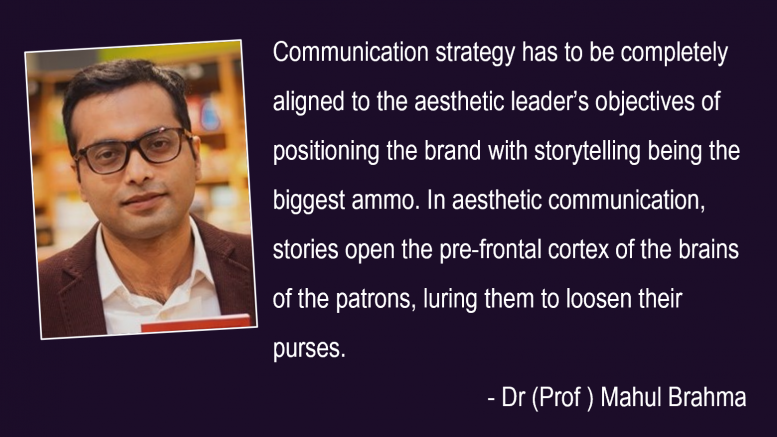The Greek word aisthesis refers to any kind of sensory experience regardless of whether it is sensuous or artistic. Philosopher Alexander Gottlieb Baumgarten is considered the father of aesthetics. Along with Vico (1744, reprinted in 1948), he contended that knowledge was as much about feelings as it was cognition (Baumgarten, 1750). Aesthetic knowledge involves sensuous perception in and through the body (Merleau-Ponty, 1962) and is inseparable from our direct experience of being in the world (Dewey, 1958; Gagliardi, 1996).
Let us first understand the raison d’etre of the term “aesthetic leadership”. Aesthetics is defined as the philosophical study of beauty and taste. The term is closely related to the philosophy of art, which is concerned with the nature of art and the concepts in terms of which individual works of art are interpreted and evaluated. So, aesthetic leadership primarily concerns the manner in which artists, and other aesthetic workers, executes leadership within groups, communities and culture, often outside established positions of authority. Just like Apple during the leadership of Steve Jobs.
It is also quite possible that aesthetic leadership draws some of its power from the position of the aesthetic producer or rather creator, who is mostly outside conventional leadership positions. The leadership is rather centred around that key creator on whose aesthetic prowess the organisation is running.
So let us now look into the communication strategy for Aesthetic leaders as well as for aesthetic organisations that I have elaborated in my latest book Aesthetic Leadership in Luxury.
The organisation as a whole has one point agenda: to communicate to all stakeholders, especially external, that it is obsessed by aesthetics and design. The second point agenda is to showcase, more so internally, that its structure is primarily centred around the aesthetic prowess of the leader. To be a leader, you do not have an option of not being aesthetic.
The core communication that needs to be propagated across all media is that the organisation has zero tolerance in terms of aesthetic excellence.
The second agenda is to build the profile of the leader as one who is driven by aesthetics and design. There is a huge role of storytelling in this segment wherein stories of eccentric behaviour towards obsession for design and aesthetics need to do the rounds so that no one questions the leadership. The leader needs to also demonstrate a certain behavioural pattern that establishes him/her as the last word in aesthetics and design. This not only helps in establishing the trust of the patrons but also helps in keeping the organisational balance under check.
No matter how unconventional it is to cite the example of a tech company in luxury business, I can’t possibly explain this without citing the example of Steve Jobs and Apple. Steve Jobs created a mythic value for not only him but also for his company – a combination of two contradictions of aesthetics or design and technology. Apple’s obsession with design has made it a leader and Jobs has communicated the obsession with design in every demonstration during the launches. He not only established his prowess as an aesthetic leader, but also established the supremacy of Apple as an aesthetic leader in the industry.
Creative designers in various luxury or fashion houses are given a free hand to create a team aligned to the aesthetic needs of the company or brand so as to strengthen the competitive advantage. When they leave, there is a void in aesthetically leading the company or brand. Apple faced it after Jobs’ demise, fashion houses like LVMH and Gucci keeps facing it when their creative heads move on and build their own labels, such as Marc Jacobs or Tom Ford.
Communication thus plays a strategic role in keeping together the reputation of the brand during that period of crisis so that aggressive branding via storytelling can keep the margins intact.
Communication strategy has to be completely aligned to the aesthetic leader’s objectives of positioning the brand with storytelling being the biggest ammo. In aesthetic communication, stories open the pre-frontal cortex of the brains of the patrons, luring them to loosen their purses. The premium charged is all thanks to the aesthetic leadership of the brand and even the smallest crisis due to diversity or racial intolerance or gender-insensitivity in communication can give a fatal blow to the brand.
It is thus always walking a tightrope when the majority of your clients are GenZ millionaires, who are sensitive and a believer in diversity, inclusion, gender-tolerance and sustainability!
The views and opinions published here belong to the author and do not necessarily reflect the views and opinions of the publisher.



Be the first to comment on "Aesthetic Leadership in Luxury: Communication Strategies"